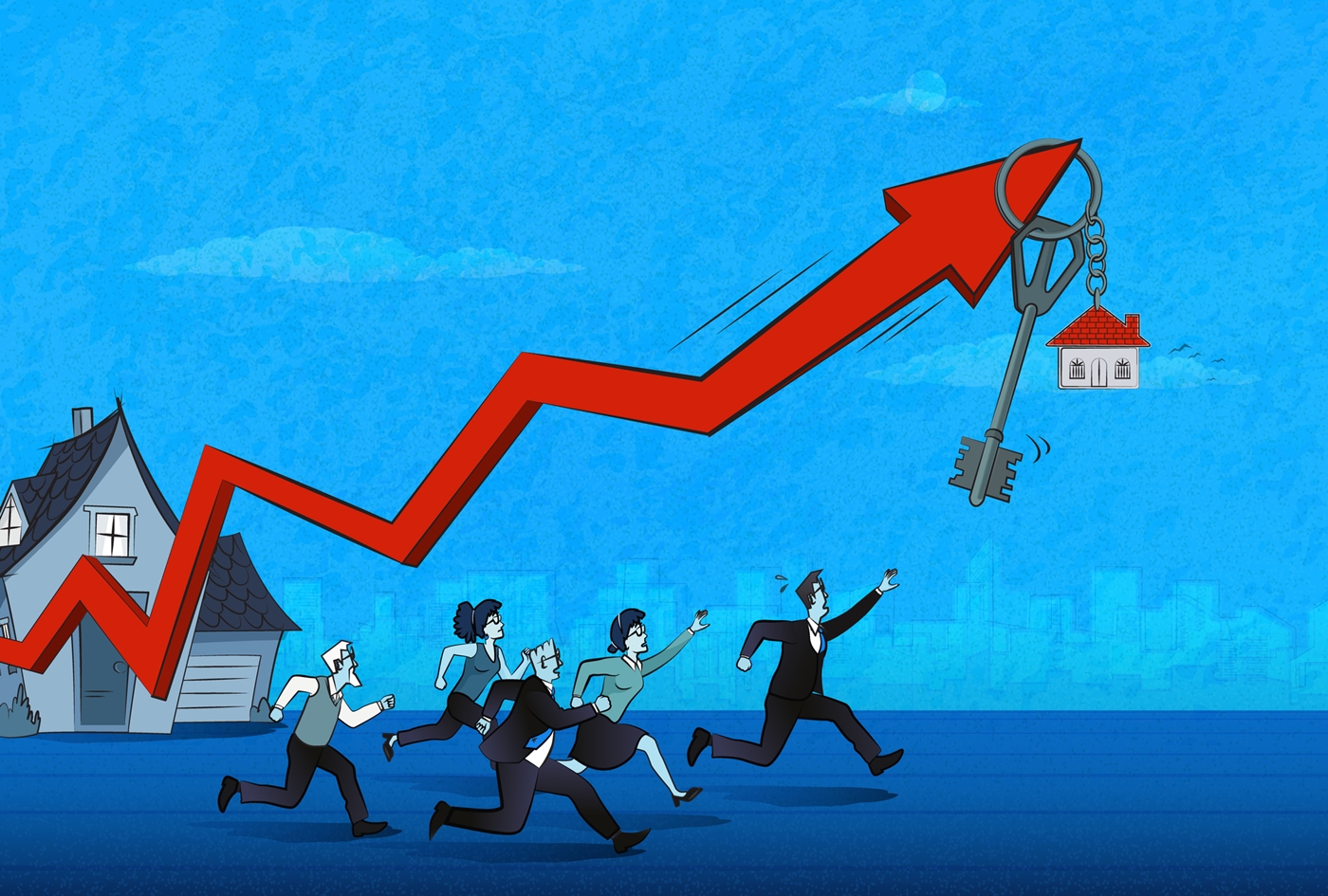Another week and another round of fixed rate hikes have swept Canada’s mortgage market.
Mortgage lenders, including most of the big banks, have continued to hike their fixed mortgage rates following the recent surge in Government of Canada bond yields, which are used to price fixed-rate mortgages.
Several big banks, including BMO, CIBC and RBC, have hiked their posted rates by 15 to 40 basis points over the past week (one basis point is equivalent to 1/100th of a percentage point, or 0.01%).
Some of the biggest moves were seen in shorter 1- and 2-yr terms, according to data from MortgageLogic.news. Among national mortgage providers, average deep-discount rates for a 1-year term are now up to 6.25% (from 5.99% a week ago). And among the big banks, posted 2-year rates are up by about the same amount, averaging nearly 6.40% now.
Ron Butler of Butler Mortgage points out that bond yields are now up by over 100 basis points, or a full percentage point, from their March lows.
In previous weeks, rates with a 4-handle—that is, those in the 4% range—have largely disappeared. But the latest rounds of rate hikes are taking many fixed rates well into 6% and 7% territory.
Asked if 5-handle rates could be next to dry up, Butler said borrowers can expect 1- and 2-year rates in the 6% range, while 3- and 5-year rates should stay in the 5% range “for the time being.”
He adds that clients are continuing to express interest in both two and three-year terms.
Will rates continue to increase next week?
Given the surge in bond yields, Butler suspects lenders and brokerages will continue to raise fixed rates next week, potentially by as much as 30 bps.
And now that the 5-year yield has broken 3.60%, a key threshold, it still has its sights on the next important level of 4.00%, says Ryan Sims, a TMG The Mortgage Group broker and former investment banker.
“If we see a large drop today on the close, I think a lot of lenders will hold, but if we close up or even flat today, and next week is the same, then I think we could see some further fixed rate increases,” he told CMT.
“If we see the Canada 5-year bond hit the magical 4.00%, there is not a lot of resistance between 4.00% and 5.00%,” he added. “It’s not my prediction at all, but if we hit 4%, hold the 4%, and get any little bit of inflationary news, then it will be rocket fuel to the yield.”
Michael Gregory, Deputy Chief Economist at BMO Economics, notes that 2-year yields are up 43 bps from May’s average so far and are “poised to become the highest monthly mark in almost 15 years.”
He said the increase reflects “the prospects for a higher terminal policy rate and a ‘higher-for-longer’ theme to subsequent easing (presuming the economy steers clear of a deep recession).”
“Meanwhile, on both sides of the border, we look for the yield curve (2s-10s) to reach peak inversion for the cycle (on a monthly average basis) within the next month or two,” he added.
What’s driving the rate hikes?
The increase in Canadian bond yields came following recent rate hikes by other world central banks, as well as a rise in U.S. Treasury yields that came in response to hawkish comments from Federal Reserve Chair Jerome Powell.
Testifying before U.S. lawmakers, Powell suggested more policy tightening will be needed. At a separate event, Fed Governor Michelle Bowman said “additional policy rate increases” would be needed to bring inflation under control.
Last week, Powell also said that rate cuts would only be considered by the Fed once inflation comes down significantly. “It will be appropriate to cut rates at such time as inflation is coming down really significantly, and again, we’re talking about a couple years out,” he said.
U.S. markets are now pricing in a higher chance of two additional FOMC rate hikes this year., and any moves south of the border inevitably have an impact on Canadian interest rates.
This week also saw rate hikes by the Swiss National Bank, the Bank of England and Norges Bank. The latter two surprised markets with larger-than-expected increases of 50 bps.
Taken all together, the latest rate commentary and central bank moves have heightened market concerns about global inflation as well as the economic impact of higher-than-expected policy rates.
Those with a variable rate are also expected to feel more pain from rising rates, potentially as soon as the Bank of Canada‘s next policy meeting on July 12.
Markets are pricing in a nearly 70% chance of an additional quarter-point rate hike next month, with those odds rising to 100% by September. All eyes will be on May inflation and employment figures, which could sway the BoC decision either way.
The following are the latest interest rate and bond yield forecasts from the Big 6 banks, with any changes from their previous forecasts in parenthesis.
| Target Rate: Year-end ’23 |
Target Rate: Year-end ’24 |
Target Rate: Year-end ’25 |
5-Year BoC Bond Yield: Year-end ’23 |
5-Year BoC Bond Yield: Year-end ’24 |
|
| BMO | 5.00% (+50bps) | 4.00% (+50bps) | NA | 3.55% (+5bps) |
3.05% (-20bps) |
| CIBC | 5.00% (+50bps) | 3.50% (+50bps) | NA | NA | NA |
| NBC | 5.00% (+100bps) | 3.75% (+75bps) | NA | 3.40% (+60bps) | 2.95% (+25bps) |
| RBC | 5.00% (+50bps) | 3.50% (+50bps) | NA | 3.30% (+55bps) | 2.75% (+20bps) |
| Scotia | 5.00% (+25bps) | 3.75% (+50bps) | NA | 3.65% (+40bps) | 3.60% (+35bps) |
| TD | 5.00% (+50bps) | 3.50% (+100bps) | NA | 3.65% (+60bps) | 2.85% (+25bps) |



